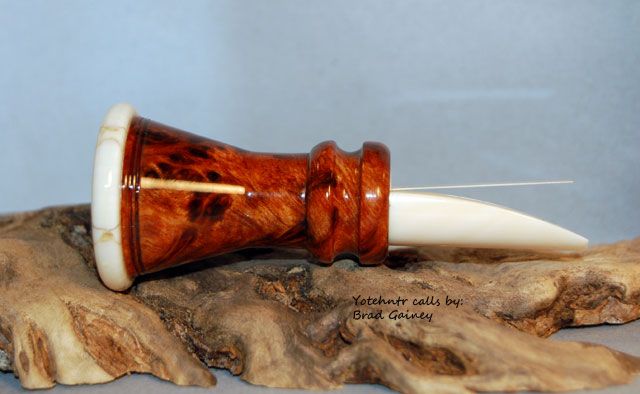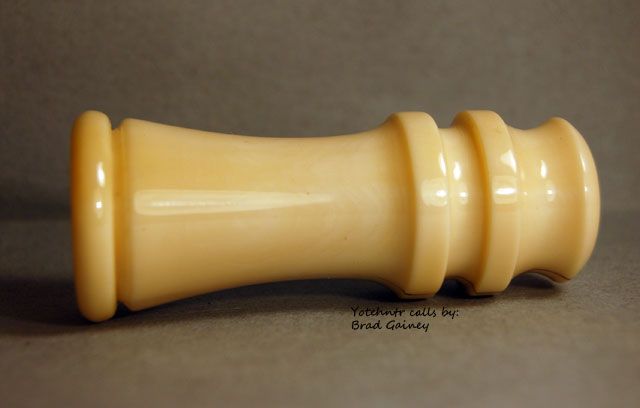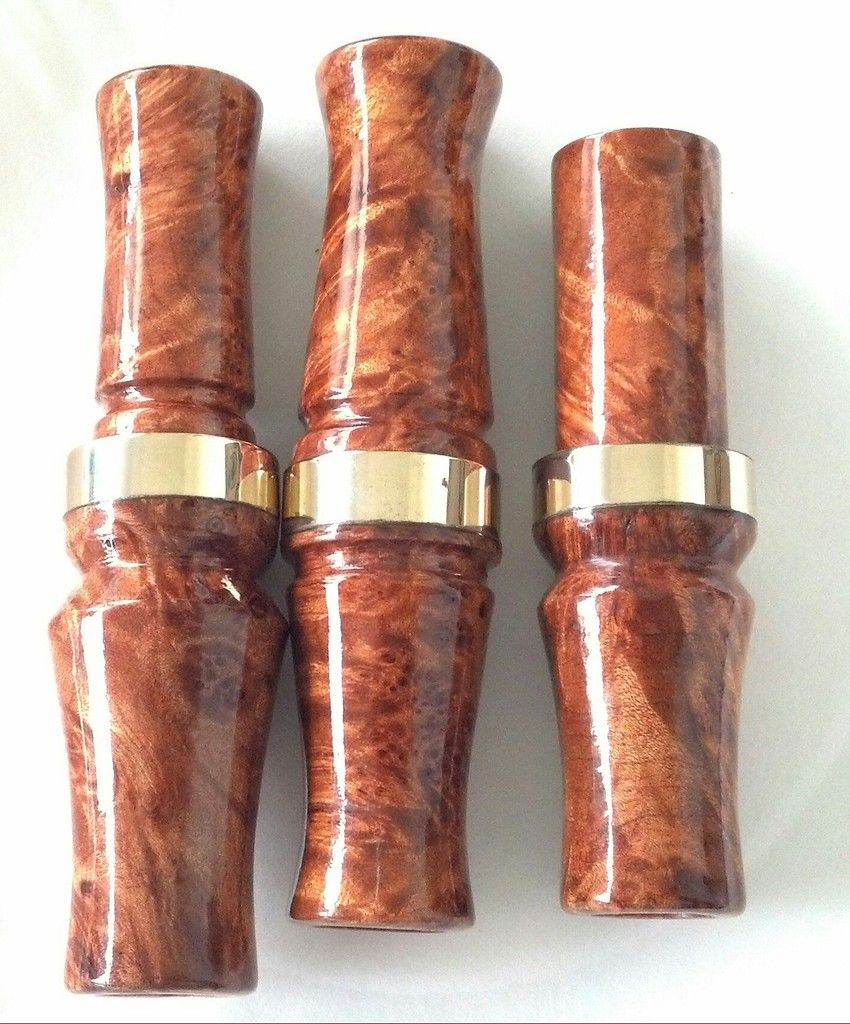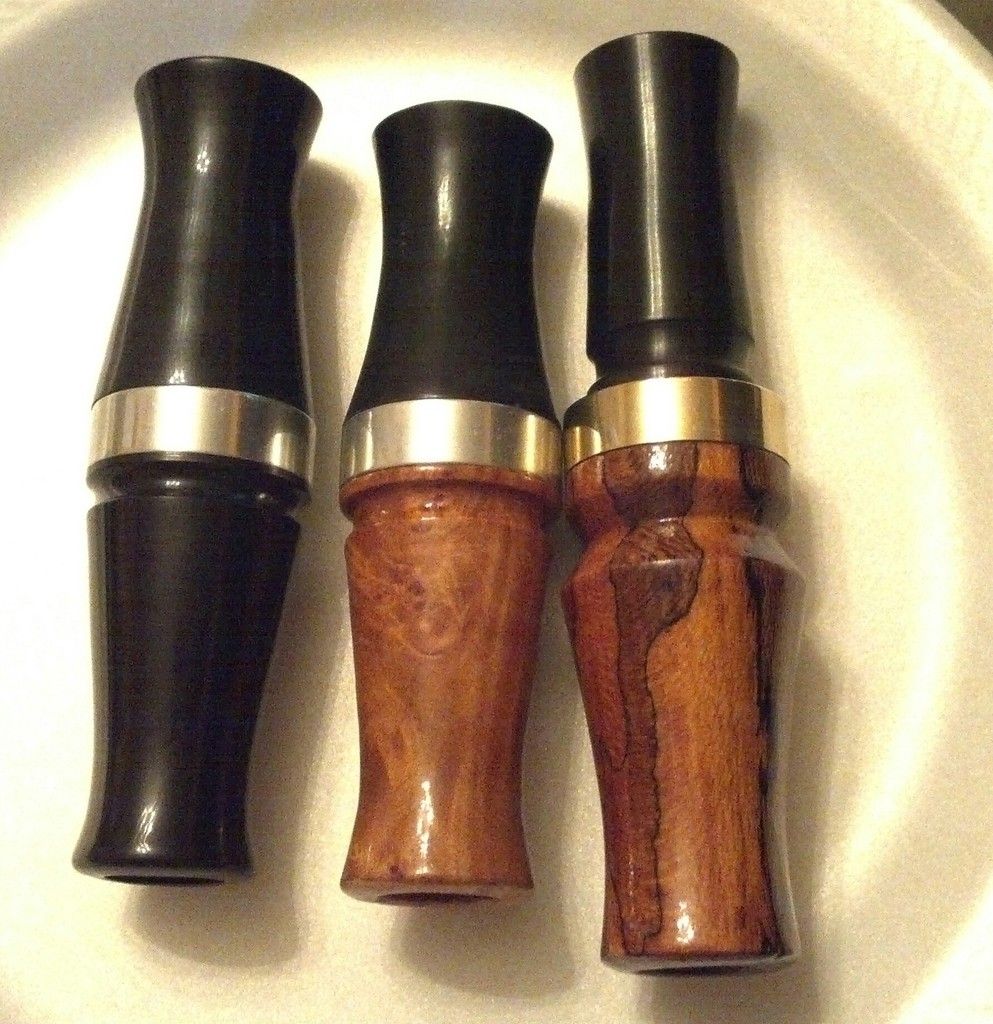I'm no expert, but I've turned a few, and collected a LOT of different calls. My materials engineering history can't help but analyze calls too, so I've spent a lot of time picking apart different attributes calls in my collection.
Originally Posted By: Paladin51Does wood choice make that big of difference in predator call like it does a goose call?
Wood density and hardness makes a big difference in sound. Like Brad pointed out, "stabilized" or sealed wood will take on some of the sharpness of the CA. I'm a huge fan of the sharp and shrill tones that horn, stabilized antler, and acrylic calls produce. Heavier woods, laminates, etc can produce a softer tone.
Originally Posted By: Paladin51I have couple sets of ydh1 howler guts...do most glue them in wood?
The YDH1 (I only have one of them) is not made to be glued in. Out of around 100 open reed calls, an exceedingly small minority of them are glued in, regardless of toneboard.
Originally Posted By: Paladin51Do u add a brass insert to hold guts.....I do in my goose calls.
I don't believe I have any brass gut calls in my collection. Closed reed calls are generally held in rubber bushings (few) or metal sleeves (many). JC reeds are the only major manufacturer of closed reed reeds in the US, so everybody uses their reeds, sleeves, and bushings.
Originally Posted By: Paladin51Does length and bore diameter play that big of a role like in duck or goose calls?
Yes. Exhaust design and mouthpiece design (for closed reeds) are critical for the calls sound, control, and volume. The toneboard design, of course, is critical for open reeds. I'm a particularly devoted fan of the long, thin air chamber like Brad produces, as I feel, for the sound I want to produce, it gives me the best control and versatility. It might rob me of some volume (doesn't seem to, since it efficiently uses my air), but I'm convinced that it produces the most efficient call.
Originally Posted By: Paladin51What differentiates between open reed guts a coaxer, distress, pup howler?
Brad attached photos of open and closed reed calls. Open reeds offer a lot more diversity on the market, as many makers cut or mold their own toneboards for different sounds, but there are a lot of makers that do use "purchased" toneboards, like Yellerdog's, Rick's, or Kerry's. Again, all closed reed calls use the same JC products reeds. How different makers tune the reeds will make a difference, but the starting reed inserts are all the same, there's a dozen or so different reed insert models available.
The fun part, as a collector and as a maker, is that even though we all work with the same insert reeds, the call its stuck into can make that same reed sound very different. I'd venture I have around 50 calls with LVDR-002-002 reed inserts, but none of them sound exactly the same.
 . I've been a viewer of this forum for some time now. I have tried reading as much as I can on predator calls and have a few questions. Does wood choice make that big of difference in predator call like it does a goose call? I have couple sets of ydh1 howler guts...do most glue them in wood? Do u add a brass insert to hold guts.....I do in my goose calls. Does length and bore diameter play that big of a role like in duck or goose calls? What differentiates between open reed guts a coaxer, distress, pup howler?
. I've been a viewer of this forum for some time now. I have tried reading as much as I can on predator calls and have a few questions. Does wood choice make that big of difference in predator call like it does a goose call? I have couple sets of ydh1 howler guts...do most glue them in wood? Do u add a brass insert to hold guts.....I do in my goose calls. Does length and bore diameter play that big of a role like in duck or goose calls? What differentiates between open reed guts a coaxer, distress, pup howler? 






